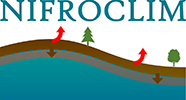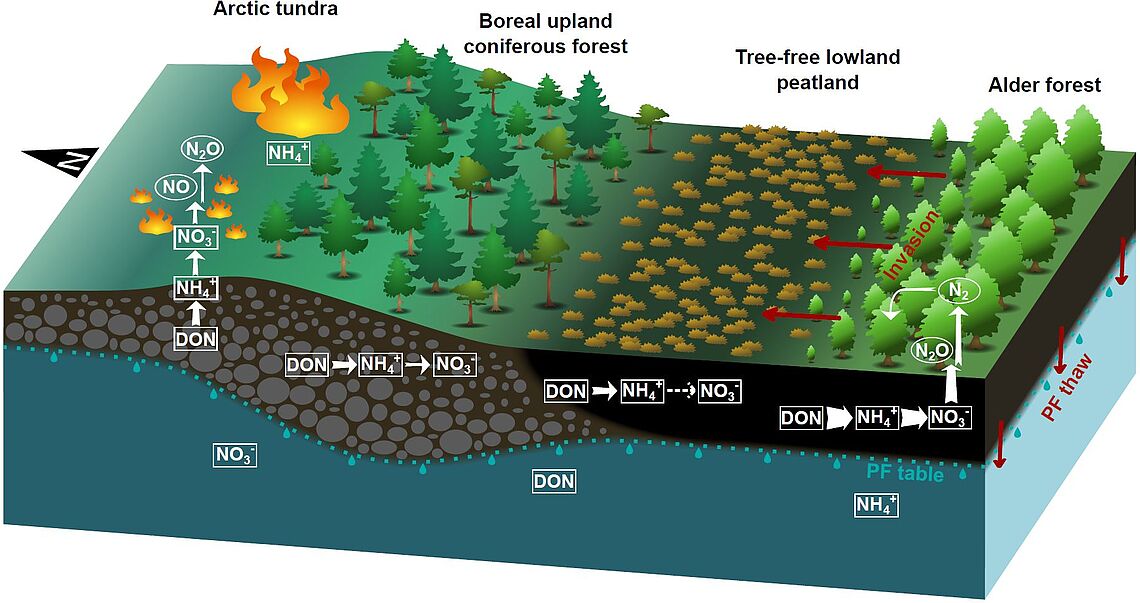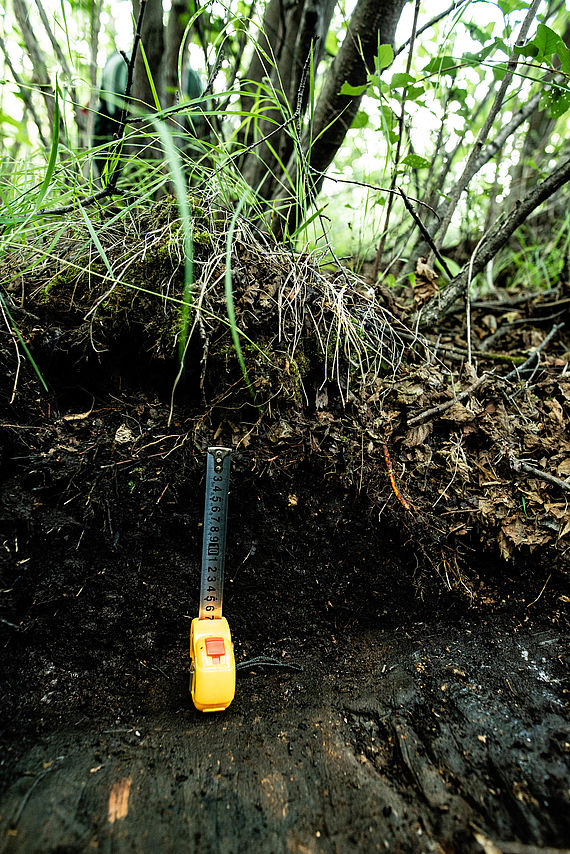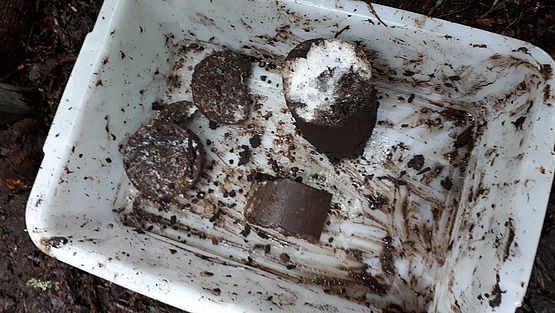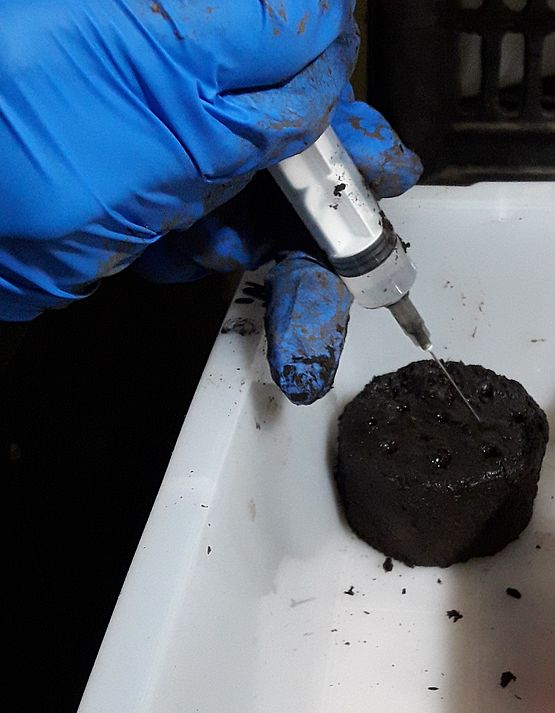Permafrost refers to ground that has a temperature at or below 0 °C for two or more consecutive years. Permafrost soils of the Northern hemisphere store vast amounts of both organic carbon (C) and nitrogen (N). Due to global warming and permafrost degradation, large amounts of C previously stored in frozen organic matter have been released to the atmosphere in the form of carbon dioxide (CO2) and methane (CH4).
In contrast to the intensive research addressing the permafrost C climate feedback, research on permafrost soil N biogeochemistry and associated release of the potent greenhouse gas nitrous oxide (N2O) under a changing climate is strongly lagging behind. This is because until recently, the soil N cycle in cold and pristine ecosystems was thought to be largely confined to organic N cycling and N2O emissions from permafrost soils were thus assumed to be negligible. However, over the last decade, a growing number of studies reported very high N2O emissions from permafrost soils, which are in a comparable range as observed for tropical forests or agricultural ecosystems. In addition, the few available studies on experimental warming of permafrost soils hint at a stimulation of N2O emissions by temperature, thereby highlighting the urgent need for more studies about a potential permafrost N climate feedback. The NIFROCLIM project funded by DFG and NSFC tackles this lack of research.
